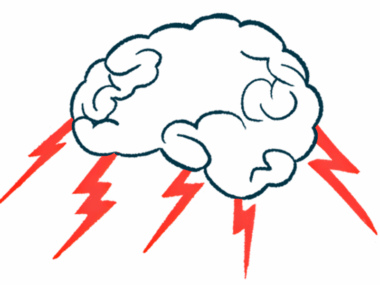Device that assesses brain activity may help diagnose Parkinson’s
System also may aid in differentiating between the disease's subtypes
Written by |

Delphi-MD, a system that measures brain activity, may be used for the early diagnosis of Parkinson’s disease and for differentiating between its subtypes, particularly those marked by rapid disease progression, a study shows.
The technology, developed by Quantalx Neuroscience, provides direct, real-time imaging of the brain’s electrical activity, allowing specific changes in the network of interconnected nerves that occur at early disease stages to be identified. It also may contribute to early and personalized treatment by identifying patients with rapid Parkinson’s progression at the initial disease stages.
“Delphi-MD represents a leap forward in our ability to confirm the diagnosis of Parkinson’s disease at an earlier stage,” Mark Hallett, MD, one of the study’s authors and part of Quantalx’s scientific and medical advisors, said in a company press release.
“The precision and clarity it provides in detecting subtle brain network changes could revolutionize how we approach treatment and patient care,” said Hallet, who is also the former chief of the human motor control section at the National Institute of Neurological Disorders and Stroke.
The study, “TMS-evoked potentials unveil occipital network involvement in patients diagnosed with Parkinson’s disease within 5 years of inclusion,” was published in NPJ Parkinson’s Disease.
Parkinson’s is caused by the progressive dysfunction and death of dopaminergic neurons, the nerve cells responsible for making dopamine, a chemical messenger neurons use to communicate. The loss of dopamine causes problems with neuronal signaling that lead to the disease’s symptoms.
Studies have identified four Parkinson’s subtypes: early-disease onset; tremor dominant, which means tremors are the main symptom; non-tremor dominant; and rapid disease progression without dementia. Establishing the disease’s subtypes may contribute to more personalized care and treatment, and help physicians decide which medications should be prescribed during the disease’s course, and when.
Patients identified as having rapid disease progression “might be considered for DBS [deep brain stimulation] earlier on or other experimental treatments,” the researchers wrote. DBS involves surgically implanting a device in the brain to stimulate specific regions.
The Delphi-MD device allows the real-time detection of brain network function following stimulation with a magnetic pulse that’s both noninvasive and free of radiation. It received breakthrough device designation in the U.S. for detecting and diagnosing other neurological conditions, including stroke and dementia. The designation is designed to accelerate the development and review of medical devices that might provide for more effective diagnosis and treatment for life-threatening or irreversibly debilitating diseases.
Evaluating impairment in brain networks in Parkinson’s
Researchers at Quantalx and institutions in Israel evaluated whether Delphi-MD could detect patterns of brain network dysfunction specific to Parkinson’s subgroups, and therefore help distinguish between them.
They compared post-stimulation network patterns of three brain regions — motor cortex, dorsolateral prefrontal cortex, and visual cortex — between 62 Parkinson’s patients and 76 healthy people, who were used as controls. The motor cortex is involved in planning and voluntary movement control, while the dorsolateral prefrontal cortex is involved in memory, cognitive flexibility, planning, and more. The visual cortex is responsible for receiving and processing visual information.
“To our knowledge, this is the first study in [Parkinson’s disease] patients that examined the effects of [visual cortex] stimulation on [brain network function], and compared them to [motor cortex] and [dorsolateral prefrontal cortex] stimulations,” the researchers wrote.
Parkinson’s patients had significantly altered network functioning in response to all three stimulation sites relative to healthy controls, the results showed. Changes in response to visual cortex stimulation indicated Parkinson’s-related alterations in networks within the occipital lobe, which contains the visual cortex.
The Parkinson’s patients were then divided into tremor-dominant (21 patients, mean disease duration of 3.1 years), non-tremor dominant (27 patients, mean disease duration of 4.5 years), and rapid disease progression (14 patients, mean disease duration of nearly 11 months) subgroups.
The researchers found that both rapid progression and tremor-dominant groups showed significant network changes in response to visual cortex stimulation compared with the tremor-dominant subgroup.
Further statistical analyses indicated the pattern of response to visual cortex stimulation could discriminate patients with rapid disease progression from those in the other two subgroups with an accuracy of 85%.
Given that this pattern was the most effective at discriminating rapid disease progression patients, the researchers then evaluated possible associations between such pattern and disease features in all the Parkinson’s patients. They found that certain altered patterns of response to the visual cortex were significantly associated with more advanced disease stage.
“Our findings suggest that occipital networks have important impact on the electrophysiological profile of [Parkinson’s] patients already during the early stages of the disease,” wrote the researchers, who said the results suggest “changes in neuronal networks related to the primary visual cortex that might differentiate [rapid disease progression] patients in the early stages of diagnosis.”






